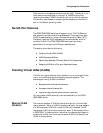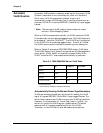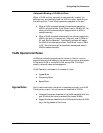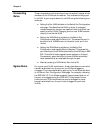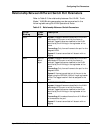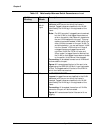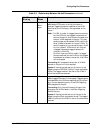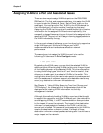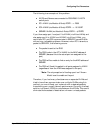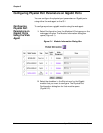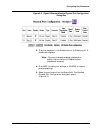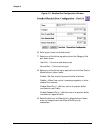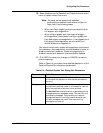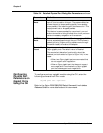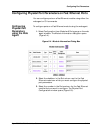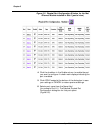
Cajun P550/P880/P882 Switch User Guide
Configuring Port Parameters
5-13
The following is an example of this problem.
■ All PCs and Servers are connected to P550/P880 10/100TX
switch ports
■ PC1–VLAN1 (via Module & Ports)–PORT1 ---> P550
■ PC2–VLAN2 (via Module & Ports)–PORT2 ---> 10/100BT
■ SERVER1-VLAN4 (via Module & Ports)–PORT4 ---‡ PORTS
If you then assign port 1 and port 2 to VLAN4 (via Virtual LANs) and
also assign port 4 to VLAN1 and VLAN2 (via Virtual LANs), you
could have PC1 and PC2 communicate to SERVER1 across VLANs
without any noticeable problems. However, when PC1 transmits a
packet to SERVER1, the following occurs:
■ The packet is sent to the P550
■ The P550 looks in the AFT in VLAN1 for the MAC address of
SERVER1 (because this is the actual port van assigned to the
port)
■ The P550 will be unable to find an entry for the MAC address of
SERVER1
■ The P550 will flood this packet to all ports assigned to VLAN1
(regardless of how the VLAN was assigned to the port)
*Note: The only exception to flooding a port is of ‘Known
Mode’ is set to enable on the port
Therefore, if you had many clients/servers on separate VLANs and
tried to have them communicate over multiple VLANs using this
method, you would flood your network with undesired packets,
thus slowing your overall network performance. Currently, the best
solution is to use a L3 P550 to route between the VLANs. This would
eliminate the broadcast of destination unknown unicast packets.



